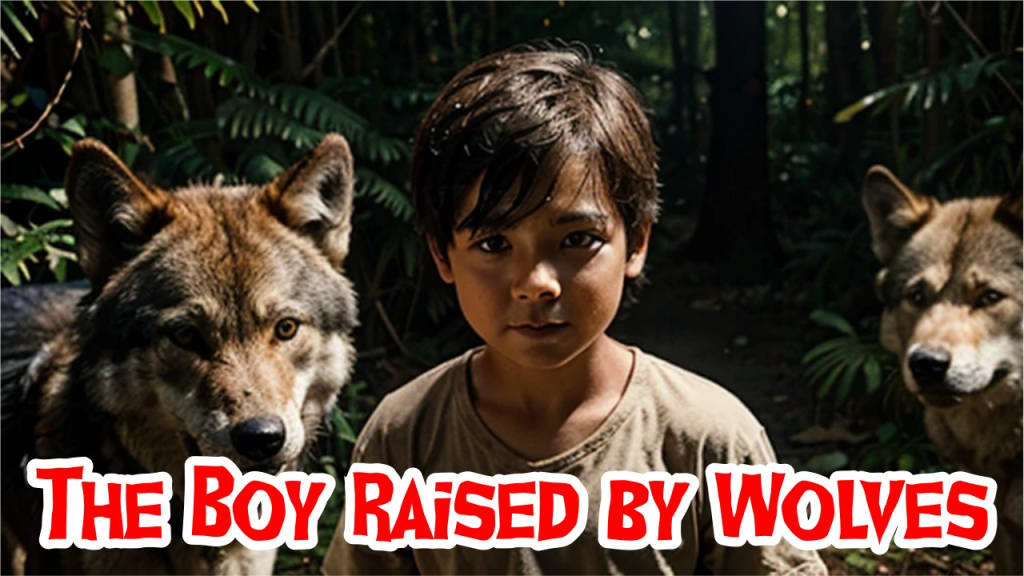
Envision developing up not in a human family, but among wild creatures, receiving their behaviors and living as one of them. This can be not an unimportant myth or legend; it's the genuine and exceptional story of Dina Sanichar, known as the "Wolf Boy of India," whose life has interested and confused individuals for over a century.
In 1867, seekers within the thick wildernesses of Uttar Pradesh, India, bumbled upon a wolf sanctum. Anticipating discovering that it was werewolves, they were flabbergasted to see a youthful boy, assessed to be approximately six a long time old, living among the pack. He has shown behaviors associated with his lupine family—moving on all fours, eating crude meat, and communicating through snarls and yells. The seekers, captivated and concerned, chose to protect the boy and bring him back to civilization.
The boy, afterward named Dina Sanichar, was taken to the Sikandra Mission Shelter in Agra. The move from the wild to human society was full of challenges. Dina stood up to wearing a dress, favored crude meat over cooked nourishment, and at first found strolling upright troublesome. His early long time among wolves had profoundly imbued these behaviors, making the method of socialization a challenging journey.
Watch the full video, please click here
The halfway house staff, in spite of the fact that compassionate, battled to assist Dina adjust to his unused environment. He never learned to talk, depending instead on gestures and snorts for communication. Dina's case captivated ministers and clinicians alike, advertising a special, yet awful, knowledge of the impacts of separation from human contact amid basic formative a long time.
In spite of the challenges, Dina did make a few progress. Over time, he started to walk on two legs and embraced a number of human traditions, in spite of the fact that the pith of his wild childhood never totally blurred. He shaped a near bond with another wild child who had moreover been taken in by the halfway house, finding a similarity of connection in their shared, exceptional foundations.
Dina Sanichar's story, although surprising, too underscores the significant effect of the early childhood environment on improvement. His failure to completely coordinate into human society highlighted the significance of social intelligence and dialect securing amid the development for a long time. It moreover started talks among analysts about nature versus support and the flexibility of the human soul within the confront of misfortune.
Watch the full video, please click here
As Dina grew more seasoned, he kept on living at the shelter until his passing in 1895. His life, stamped by its special beginnings and the battle to adjust to human society, remains one of the foremost strong illustrations of wild children. Not at all like the anecdotal Mowgli from Rudyard Kipling's "The Wilderness Book," who consistently moves between the creature and human universes, Dina's reality is distant more complex, and awful.
The story of Dina Sanichar, the boy raised by wolves, has cleared a permanent stamp on our understanding of human improvement and the significance of early socialization. It serves as a piercing update of the unimaginable flexibility of people, as well as the significant impacts of the environment on forming who we end up with. Dina's life proceeds to intrigue and motivate, advertising an interesting window into the puzzles of human nature and improvement.
The tale of Dina Sanichar could be a confirmation of the momentous and frequently strange flexibility of the human soul. Whereas his life was checked by battle and a consistent fight between his wild upbringing and human society, his story remains a significant chapter within the archives of mental and anthropological things. Dina Sanichar, the boy raised by wolves, proceeds to captivate our creative energy, reminding us of the significant effect of our early situations and the persevering journey to get it the human condition.
Watch the full video, please click here
About the Creator
Enjoyed the story? Support the Creator.
Subscribe for free to receive all their stories in your feed. You could also pledge your support or give them a one-off tip, letting them know you appreciate their work.





Comments
There are no comments for this story
Be the first to respond and start the conversation.